Sando's Guide to Beastmaster
Sando
June 26, 2014
Introduction
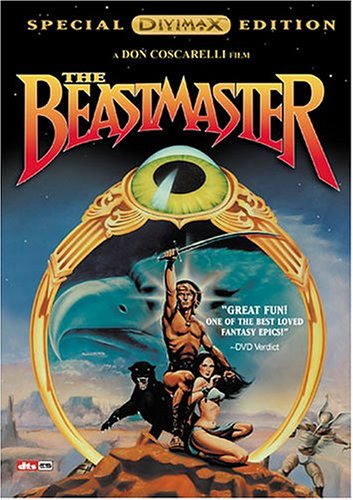 |
|
 Beastmaster is a versatile hero who can fulfil a number of roles for his team - mainly pusher and initiator. Beastmaster is a versatile hero who can fulfil a number of roles for his team - mainly pusher and initiator.
He has a strong mix of skills, including strong pushing and vision skills. He's also noted for his magic-immunity busting nuke and stun.
Beastmaster 2 was a travesty of a film, an extremely poor 90's sequel to the popular 80's classic.
|
Strengths and Weaknesses
+ Skills are effective against magic immunity
+ Strong pusher
+ Provides extra vision for the team
+ Powerful stun
+ Can stack/farm ancients from early on
+ Good base damage and armour
+ Strong passive aura
- Mana dependent
- Slightly weak overall stat gain
- Can struggle to find a defined role/laning position
- Lacks the damage to be a true carry
- Somewhat farm and level dependent
Call of the Wild
Call of the Wild (Hawk)Call of the Wild (Boar)
It's probably fortunate they didn't name this "Call of Nature", Call of the Wild is actually two separate summoning spells that you level together. One summons a Hawk for extra vision, and the other a Boar with a powerful slow.
After the recent 6.81 changes, you can now have up to two of each of these for brief periods - summoning one will NOT destroy any existing animals. The ability is very cheap at 15 mana, but you do have to be careful not to feed the opposition with them, as they a reasonable bounty attached to them.
Using the summons properly requires some micromanagement - generally you'll want to assign hotkeys to the hawk, boar and yourself (assigning a key to yourself and the boar can also be useful).
The hawk is essentially a mobile ward - it provides flying vision over an area below it, especially useful as it can spot enemies in terrain that is normally difficult to ward. A good  Beastmaster should be providing constant additional vision for his team once he has the mana to do so. The only other sneaky use I know is that your team can Roshan early by teaming up with
Beastmaster should be providing constant additional vision for his team once he has the mana to do so. The only other sneaky use I know is that your team can Roshan early by teaming up with  Enigma and using the hawk to provide a source of Eidolons.
Enigma and using the hawk to provide a source of Eidolons.
The boar is more interesting, and is available from level 2 of his ability. His attack is weak against heroes, mainly providing a very respectable 20/35% movement and attack slow on them. This is massively helpful for both escaping and ganking, and you should use the boar in addition to your own attacks here.
The boar also provides the usual minion duties - scouting, pushing and stacking. If you're not using him for anything else, stacking ancients for yourself or your carry is always a useful job for him.
Inner Beast
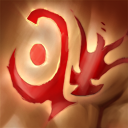
 Inner Beast is your passive skill, providing a respectable attack speed bonus to any allies within a fair radius. This goes quite a long way in helping with your relatively poor agility gain, but is just generally very useful for your team.
Inner Beast is your passive skill, providing a respectable attack speed bonus to any allies within a fair radius. This goes quite a long way in helping with your relatively poor agility gain, but is just generally very useful for your team.
Carries will appreciate it, especially if they have poor agility gain ( Tiny, Doombringer, Outworld Devourer etc).
Tiny, Doombringer, Outworld Devourer etc).
It's useful for pushing, providing additional attacks for your minions and nearby creeps. Obviously we have to be careful choosing when to level it - too early and it will push your lane out.
Skill Builds
The builds above are reasonably standard, with 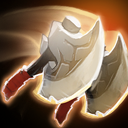 Wild Axes usually the first skill to be maxed, with early points in Call of the Wild for vision and utility. I haven't put any builds up for it, but sometimes you will skill
Wild Axes usually the first skill to be maxed, with early points in Call of the Wild for vision and utility. I haven't put any builds up for it, but sometimes you will skill  Inner Beast as soon as level 4 if you're in an early push lineup.
Inner Beast as soon as level 4 if you're in an early push lineup.
The main thing to bear in mind when skilling  Beastmaster for me is how much mana you have available.
Beastmaster for me is how much mana you have available.  Wild Axes is expensive compared to your mana pool, and you're not going to be able to use it much before you get a
Wild Axes is expensive compared to your mana pool, and you're not going to be able to use it much before you get a  Soul Ring. Call of the Wild is very cheap to run, and level 2 gives you access to the Boar, with it's slow and stacking potential.
Soul Ring. Call of the Wild is very cheap to run, and level 2 gives you access to the Boar, with it's slow and stacking potential.
The slow is very useful - it provides a much better chance to kill most offlaners than the bit of extra damage from level 2  Wild Axes. You can also use it to stack the jungle, or stack ancients cheaply if you can't afford to
Wild Axes. You can also use it to stack the jungle, or stack ancients cheaply if you can't afford to  Wild Axes them every minute. If you do have mana, then max
Wild Axes them every minute. If you do have mana, then max  Wild Axes ASAP in most cases.
Wild Axes ASAP in most cases.
 Inner Beast can be levelled at 4, as noted, but you'll generally leave it until later. The rule of thumb is that you want at least 1 point in it when your team is going to seriously start pushing towers - so you may well get it before 10 depending on your lane and team composition.
Inner Beast can be levelled at 4, as noted, but you'll generally leave it until later. The rule of thumb is that you want at least 1 point in it when your team is going to seriously start pushing towers - so you may well get it before 10 depending on your lane and team composition.
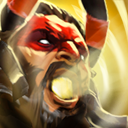 Primal Roar should be levelled at every opportunity, the mana cost increase is really minimal, and everything else is better.
Primal Roar should be levelled at every opportunity, the mana cost increase is really minimal, and everything else is better.
Role
This is where  Beastmaster really causes confusion for most players. He's versatile and does a number of different jobs...but what exactly is he?
Beastmaster really causes confusion for most players. He's versatile and does a number of different jobs...but what exactly is he?
The answer isn't straightforward - he really is jack of all trades, master of none. He can push, initiate, disable, semi-carry, provide utility and aura stacking. There are lots of heroes who can do all of these individual tasks better - but very few who can turn their hand to so many.
A better answer is that he's usually a #3 role (#4 for support) - he tends to play mid or offlane, and tailors his items to whatever the team needs most. This is normally a push, utility/aura or initiator build, with a slice of semi-carry on the side. You tend to pick up whatever responsibilities your team needs filling the most.
For example, if your team didn't have a proper initiator, you'd probably pick up a  Blink Dagger and
Blink Dagger and  Aghanim's Scepter so that you can provide that. If your team has an AFK jungler and only 1 support, you may well fill in with a
Aghanim's Scepter so that you can provide that. If your team has an AFK jungler and only 1 support, you may well fill in with a  Mekansm if the core heroes aren't very interested in one.
Mekansm if the core heroes aren't very interested in one.
Whatever role you end up in, using your Call of the Wild minions as scouts/wards for your team is essential.
Common Roles
Initiator / Ganker:
You should be mid or offlane for this build, to give you reasonably fast access to  Primal Roar. You want to rush a
Primal Roar. You want to rush a  Blink Dagger after relatively few other items, and then progress into
Blink Dagger after relatively few other items, and then progress into  Aghanim's Scepter afterwards. Some games you may be able to get away with a
Aghanim's Scepter afterwards. Some games you may be able to get away with a  Force Staff, which provides some nice stats and an escape, but generally a
Force Staff, which provides some nice stats and an escape, but generally a  Blink Dagger is preferred for perfect placement of
Blink Dagger is preferred for perfect placement of  Primal Roar for maximum effect.
Primal Roar for maximum effect.
Utility / Aura Carrier:
You're relatively tough and don't have a huge amount of core equipment (Boots and a
 Soul Ring
Soul Ring usually covers it) that you must get. As you're relatively tanky and already provide an aura with
 Inner Beast
Inner Beast,
 Beastmaster
Beastmaster is a good hero for stacking up further auras and utility items for his team.
Common auras include
 Mekansm
Mekansm,
 Drum of Endurance
Drum of Endurance,
 Vladmir's Offering
Vladmir's Offering and
 Shiva's Guard
Shiva's Guard. You could even go as far as an
 Assault Cuirass
Assault Cuirass, but this is generally preferred on a proper carry hero. These auras all improve the performance of your team in combat, and creeps/minions when pushing.
You may also get some utility items like
 Pipe of Insight
Pipe of Insight - you're already quite tanky, so the extra magic resistance and health regen is nice - although the primary purpose is to help your team survive AOE magical damage. You might consider other utility items too -
 Force Staff
Force Staff,
 Eul's Scepter of Divinity
Eul's Scepter of Divinity,
 Urn of Shadows
Urn of Shadows and
 Medallion of Courage
Medallion of Courage can also be useful on you, especially when playing support.
Pusher:
 Beastmaster
Beastmaster's skills all provide some utility for pushing - the obvious qualities of
 Inner Beast
Inner Beast and
 Wild Axes
Wild Axes for getting your creeps moving, plus the scouting power of Call of the Wild to keep you safe while doing so. Even
 Primal Roar
Primal Roar can be employed to give you enough time to TP out of a sticky situation.
Generally these builds start with a
 Necronomicon
Necronomicon - the strength/intelligence is very useful, and the minions benefit greatly from
 Inner Beast
Inner Beast. You can expand out from here with more utility/aura type items, or possibly a
 Maelstrom
Maelstrom (your attack speed should provide you with plenty of procs) or even a
 Desolator
Desolator.
 Boots of Travel
Boots of Travel also provide great utility, especially as the game goes later.
Support:
Despite the label for this section, support is not a particularly common role for
 Beastmaster
Beastmaster - he's just generally too farm/level reliant. He also doesn't offer particularly good early killing power, with just the damage of
 Wild Axes
Wild Axes and slow of Call of the Wild to help.
However, he is very occasionally played here, and can still be useful. Generally the extra vision of Call of the Wild's hawk is great against aggressive teams with a heavy roaming presence. Use the Boar to double and triple stack camps for you/your carry to plunder later on.
This build almost always go with
 Arcane Boots
Arcane Boots/
 Mekansm
Mekansm, with a utility/aura based flavour, and a good possibility of cheaper utility items early on.
When to Pick Him
+ Suspect enemy team will roam heavily
+ Need a hero with strong disable/pushing skills
+ Going for an aura stacking team
+ Need magic immunity busting stun
- Team lacks other pushers
- Nowhere for him to lane effectively
- Want a specialist for a particular role
- Heavily countered by opposition lineup
Offlane and Ancient Stacking


 Beastmaster is most commonly played as an offlaner. He's tanky, has an AOE nuke and is not super-farm dependent, so can do a job here. What he really lacks is an effective escape - the closest you get is the slow from your Boar, and the early warning from your Hawk.
Beastmaster is most commonly played as an offlaner. He's tanky, has an AOE nuke and is not super-farm dependent, so can do a job here. What he really lacks is an effective escape - the closest you get is the slow from your Boar, and the early warning from your Hawk.
Some people do like to go for a  Tango/
Tango/ Boots of Speed build for offlane - this is quite good if the opposition only have stuns instead of slows, as you can generally outrun them early on, and position yourself better. However, against strong slows this is a bad idea.
Boots of Speed build for offlane - this is quite good if the opposition only have stuns instead of slows, as you can generally outrun them early on, and position yourself better. However, against strong slows this is a bad idea.
So...he's not an especially brilliant offlaner...melee, limited mana pool...etc. Why play him there? Part of the answer is that the offlane provides reasonably close access to the Ancients camp, especially if you're playing as Dire.  Beastmaster can use the composite damage from
Beastmaster can use the composite damage from  Wild Axes to boost his farm considerably by stacking them up. If this goes well, you can actually emerge from the offlane somewhere near the average gold/xp for a mid player.
Wild Axes to boost his farm considerably by stacking them up. If this goes well, you can actually emerge from the offlane somewhere near the average gold/xp for a mid player.
First things first - how do you stack ancients? Simple, you just need to attack them and draw them out of their camp at xx:50 - xx:53 in the minute, extra ancients will spawn in the empty space at the minute mark. You do this yourself with a melee attack, use  Wild Axes, or the attack from your Boar.
Wild Axes, or the attack from your Boar.
Keep stacking them whenever possible while you build up the money for a  Soul Ring, and then use repeated
Soul Ring, and then use repeated  Wild Axes to farm them safely.
Wild Axes to farm them safely.
How you do your starting items, and how much time you spend in the offlane all vary, as does your build order. Until you can actually start killing the ancients you'll not be getting farm/levels from them, so you need to hang around the offlane when not stacking, picking up what you can. The big farm/xp boost is all backloaded into when you can actually kill those ancients, and higher levels of  Wild Axes make it quicker and easier to farm.
Wild Axes make it quicker and easier to farm.
Tailor your starting items and build to what you expect to face in the offlane - if you're maybe 1v1 with a relatively weak solo then stack the ancients when you remember, but concentrate on winning the lane. If you're up against a tough trilane, focus far more of your time getting that stack nice and big.
Generally going 2 early levels in Call of the Wild allows you to stack cheaply (15 mana) using the boar, and also saves you having to leave the lane if you're playing as the radiant. However, this means the ancients will take longer to farm as you don't soften up with  Wild Axes as you go.
Wild Axes as you go.
Your starting equipment also has to be appropriate - you'll need  Tangos,
Tangos,  Healing Salve and a
Healing Salve and a  Stout Shield if competing for hits against most lineups...but if you're completely outgunned you may just decide to go for
Stout Shield if competing for hits against most lineups...but if you're completely outgunned you may just decide to go for  Claritys and a headstart on your
Claritys and a headstart on your  Soul Ring.
Soul Ring.
Be aware that some teams will recognise you as a stacker, so be prepared that they might not be available, or that you may need a  Sentry Ward from one of your supports early on (if you're lucky enough to have proper supports who'll buy them).
Sentry Ward from one of your supports early on (if you're lucky enough to have proper supports who'll buy them).
Items
There are just so many items that can be useful on  Beastmaster that I'm not even going to attempt to cover them all. The builds above cover the vast majority that I would consider the most useful, and to try to give you a flavour of the kinds of builds you'll generally want on him.
Beastmaster that I'm not even going to attempt to cover them all. The builds above cover the vast majority that I would consider the most useful, and to try to give you a flavour of the kinds of builds you'll generally want on him.
In this section I'm just going to provide some justification for the starting/core items, and then talk about the more interesting selections.
Starting Section:





 Beastmaster
Beastmaster is quite a flexible hero, so your choices even this early on are also quite varied. Get as much of your preferred kind of regen that you think you need, with additional harassment protection if you think it will be useful. You should almost always grab a
 Bottle
Bottle when mid, and may even think about it offlane if your mid isn't a rune-***** - although personally I prefer the reliability of a
 Soul Ring
Soul Ring.
Early Game:







There are actually plenty of legitimate choices here, although the
 Soul Ring
Soul Ring should almost always be in there if you're offlane/mid. It provides reliable mana and some additional regen that's always useful.
 Ring of Basilius
Ring of Basilius doesn't offer enough to fulfil your needs in these roles, but it's quite nice in a trilane.
The other items are less common - some of them you may consider in a support role, or when your team is crying out for extra utility items. There may be a few unusual ones in there -
 Orb of Venom
Orb of Venom can stack up nicely with the slow from your Boar, and I like
 Medallion of Courage
Medallion of Courage for the extra armour/mana regen. The nature of your damage output can also make it quite effective.
Boots:





 Beastmaster
Beastmaster is one of those unusual heroes who could legitimately run any type of boots.
The most commonly seen are
 Phase Boots
Phase Boots - they movement boost is always useful to him, and with
 Inner Beast
Inner Beast the damage works out much better in general than
 Power Treads
Power Treads.
 Arcane Boots
Arcane Boots are for support focused builds, or even potentially on a utility heavy one if your team didn't have another source of group mana.
 Boots of Travel
Boots of Travel are good luxuries, and especially nice on pushing builds.
 Tranquil Boots
Tranquil Boots might occasionally get an outing if you're against a tough trilane and relying on constant
 Soul Ring
Soul Ring/
 Wild Axes
Wild Axes to keep them off your tower.
Odds and Sods:





Hopefully most of the items listed will already be fairly obvious in their usage to you - we go for a lot of aura, utility and tanking items, generally avoiding full blown carry stuff.
 Rod of Atos
Rod of Atos is pretty nice against heroes without transport abilities - combined with your Greater Boar we're talking about a 4 second 95% movement slow. Great mix of intelligence gain and extra HP at a good price too.
 Heaven's Halberd
Heaven's Halberd is an ideal match for you in the late game - disarm enemy carries, while providing extra damage and evasion for tanking.
 Blade Mail
Blade Mail - great value, extra armour, intelligence and flat damage, plus you have the HP to make it worthwhile.
 Maelstrom
Maelstrom is one for push focused builds, and you'd normally buy it later than a farmer, once
 Inner Beast
Inner Beast is maxed and you already have other more important items. Procs nicely with the attack speed boost.
 Necronomicon
Necronomicon I'd say is
almost core on him, it's certainly very near to the top of my shopping list in most games. Excellent synergy with him, good utility and the stats boosts are near perfect.
 Tango
Tango
















































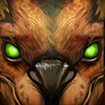

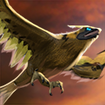

















Quick Comment (7) View Comments
You need to log in before commenting.